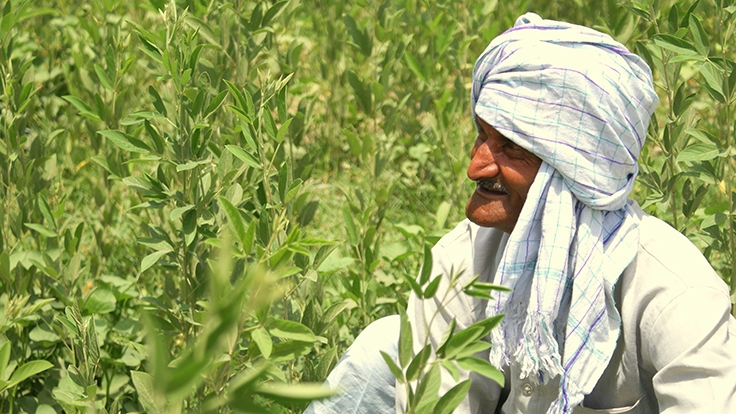It is a land that turns dreams to dust. Nothing grows in these sodic lands of Uttar Pradesh (UP), India’s most populous state. Generations of farmers have failed to coax a living from this powder-fine topsoil.
Today, however, splashes of green dot the landscape. Wheat and paddy sway in the fields and village grain bins are full. “Earlier, our lands wouldn’t even give us fodder,” says Pavitra Devi of Dhandwa village in Jaunpur district of eastern UP. “But, today, our crops are flourishing.”
Across the state, swaths of sodic lands are being reclaimed by a farmer-driven program propelled by the state-run UP Bhumi Sudhar Nigam Ltd (UPBSN). The program is supported by a World Bank project - the $ 194 million UP Sodic Lands Reclamation (II) Project - that is building on the successes of an earlier project which ran from 1993 to 2001.
What are sodic lands?
Sodic lands are those lands with a high content of salts like sodium carbonate and bicarbonate. In areas with a high water table or where drainage is inadequate, the alkali salts in the earth’s crust get dissolved.
High Salt Content
In 1998, when the project began, some 1.2 million hectares - almost 10% of the state’s total cultivable area - was too degraded to farm.
Although the region has plenty of surface and groundwater, the soil in many areas was poor. The pattern of rainfall - heavy monsoon rains followed by long dry spell - and an ailing irrigation and drainage system had led to a high build-up of soil salts mking cultivation difficult.
While the technical know-how to reclaim the land existed, most people in the area were too poor to do so. Some two-thirds of them lived below the poverty line and a third belonged to the marginalized scheduled castes.
Land holdings in the area were too small to be viable. Average holdings were only 0.4 hectare, whereas a minimum of 1 to 1.5 hectares is considered to be economically viable.
Most farmers did not have clear title to their land. They had received their lands during India’s land reforms of the 1970s when land was distributed to landless laborers and poor marginal farmers. In most cases, however, their rights had not been formalized; farmers possessed only a piece of paper.
Reclaiming the Land
The project helped farmers to secure unfettered land titles by working with local land records departments.
Once the farmers had clear possession of their lands, it helped them organize themselves into small water-user groups of 10 to 15 farmers. Each group, centred around a tubewell, acted as a reclamation team.
Local NGOs helped train farmers in testing soil quality and in preparing fields for reclamation. They scraped the top soil, leveled the fields, and built contour bunds. Tubewells were drilled and drainage channels dug.
The reclamation itself was a simple process that the farmers soon mastered – gypsum was mixed with the soil and the fields kept flooded for 15 days. When the water was drained, it washed away the harmful salts.
This left the land ready to be transplanted with its first crop of kharif (summer) paddy, followed a winter crop of wheat, and an intermediate crop of dhaincha, a nitrogen-fixing green manure that replenishes the soil before a second paddy crop can be planted.
Two or three cycles of these crops, along with efficient drainage, leaves the once-barren sodic soils ready to yield any crop, from oilseeds to vegetables to flowers.


